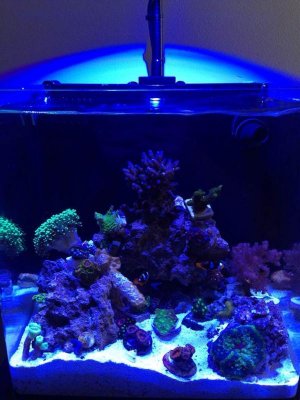Joel_155
New member
Hi all,
So curious about a Nano tank and how nutrients are managed. I've had my 60gallon cube for a 18 months now and I seem to always fight hair algae. I have a move coming up in the near future ( within the next year) and I was thinking of downsizing to a Nano. My main question is how do you manage the nutrients? I know they make small protein skimmers but I can't imagine they are all that efficient. I've seen super small fuges roo but again I'm not sure how much good that would do. Is it all water changes? Thanks for the help in advance.
So curious about a Nano tank and how nutrients are managed. I've had my 60gallon cube for a 18 months now and I seem to always fight hair algae. I have a move coming up in the near future ( within the next year) and I was thinking of downsizing to a Nano. My main question is how do you manage the nutrients? I know they make small protein skimmers but I can't imagine they are all that efficient. I've seen super small fuges roo but again I'm not sure how much good that would do. Is it all water changes? Thanks for the help in advance.

